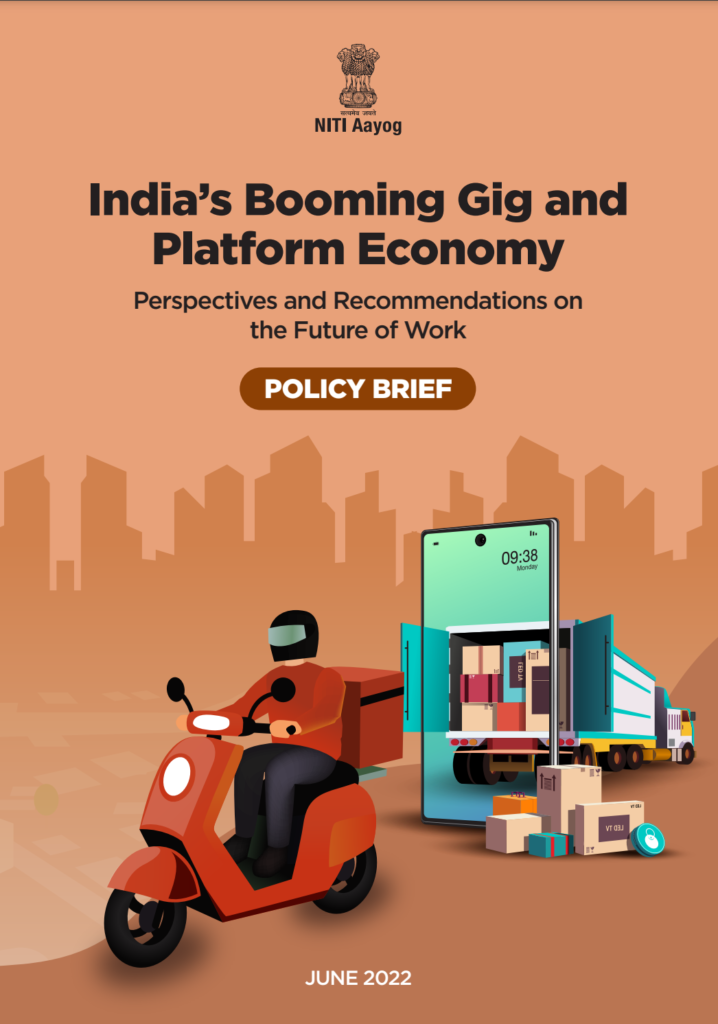The White Collared Gig Economy in India – 2
This is the concluding part of this post on the Gig Economy and the changes it is bringing about in India.
Let us now talk about India in specific. We already know that the gig economy has been prevalent in India, for a long time now, especially in agriculture. These people, of course, fly below the radar and do not even get counted. What is visible is the world of Swiggy, Meru, Dunzo and now the folk in the IT and ITES industries. People sat up and took notice of the gig workers in the IT and the ITES industry because Rishad Premji spoke out, and also fired some of his two-timing employees.
Regardless of what yellow rags like the Wire might say, this part of the economy will continue to attract more workers. Yes, of course one can say that the two pandemic years changed everything. Employee behaviour has changed too. It did. That makes it necessary for employers to react differently to the current situation.
The Situation
Given the type of growth we are seeing, the 300 people (who were two timing) aren’t the only exceptions. Designers, Graphics folk, Instructional Designers, Technical Writers etc. have been “moonlighting” ever since. Many organisations form small teams of people with these skills, and flex their workforce with “freelancers”. This part of the gig economy has existed for a while now. have been moonlighting ever since.
In the IT enabled world, one of the Big 5 accounting firms stood up against the Gig working, almost as a matter of principle.
The Change
The change, that the employers are faced with, is multi-fold and understandably difficult to tackle.
The pandemic brought in Working from Home. For some, it ended up being more work and being available for a large part of the day. But, for many others, it meant hardly any work at all. Anecdote is – an Indian IT services (top tier) employee (in digital marketing, on WFH) puts in less than four hours a day, and actually enjoys afternoon siestas on company time. Surely, it will become difficult for these people to go back to work.
The long stretch of #wfh also snapped engagement, emotional and cultural ties. The same engagement that HR keeps talking about, and encourages pointless frivolous activities for.
Many of these people, who worked from home, the more enterprising ones, picked up a second source of income. A second gig. Either full-time, or part-time.
What also did change is the skill sets which entered the gig economy. The newer entrants are programmers (of all kinds), remote infrastructure people, production support folk, and architects.

Understanding the Situation
It is important for organizations to understand why moonlighting is happening. The stimulus for the behaviour is different across the board. Some work for extra money, some to kill boredom and some others to gain diverse experience, or a combination of these.
The lower ends of the employment spectrum, where most of this moonlighting happens, isn’t well paid. The salary increase has not kept pace with inflation. This causes the primary need.
And people have time at hand, because working from home, for most, is efficient. This creates the opportunity.
The point being that an opportunity window exists, and people are taking advantage.
Accepting the Situation
Niti Ayog published a report and a set of recommendations last June on the Gig and platform economy. It is unfortunate, that the work contains some data and recommendations, essentially, around only the blue collared segment. There are scanty mentions, if at all, around the growing gig workforce in the IT / ITES sectors. So, without a policy based set of recommendations coming from the government, the private employers need to take steps on their own. The first among those is accepting the situation, and understanding that the Gig Economy is here to stay, and only grow. Hectoring about morality, around moonlighting, needs to stop. Trying to coerce the workforce to behave traditionally, as in the past, will only cause more heartburn and resignations. This implies a change of mindset among company leadership, and HR. This isn’t a battle that employers will win, in the long run.

The Way Forward
We see multiple steps to be taken as a way forward.
- Stewardship and Policy Making: Once the base level of acceptance, that Gig working is the future, has happened, the action taking starts. Implying, that an organization needs to mould itself to be able to use these people, who are not regular employees. On ground this needs to start from the top leadership understanding the modalities, and nuances. This understanding and alignment needs to flow all the way down. This understanding also needs to reflect in company policies, in terms of dealing with the Gig workers from people, and performance measurement (and result) and also from the workers’ point of view.
- Embracing Gig Workers, Hiring Right: While Gig workers are taken on board, understanding that they might have parallel gigs, protecting IP, understanding their needs become more crucial than ever before. There will continue to be a large part of the overall workforce which will prefer regular employment. For these people, the consideration (as below) is around discouraging them from “moonlighting”. The one other thing required is sensitization of these employees and enabling role segregation.
- Reconsidering Compensation: For regular employees, it is becoming important to restructure compensation especially at the bottom one-third of the workforce.
- Managing Expectations: Expectations from both sides need to crystal clear; and from a day to day perspective it is crucial for the line managers to step up, remain engaged and take responsibility (and not delegate to HR).
- Infrastructure Readiness: Dealing with the Gig workers, of course, will be different from the traditional employees. Implying that the platforms used today for all people related activities, will need to change rapidly. The platforms which react faster, will get ahead in the short term.
Many traditionally minded organizations, not willing to change, are likely to suffer. This could be a Wipro, or could be the consulting big 5 referred to above. A lot has changed in the last three years, not just in terms of technology, but power centres, people’s focus and ambitions, work styles etc. It is pertinent then that the organizations shape up, and transform.